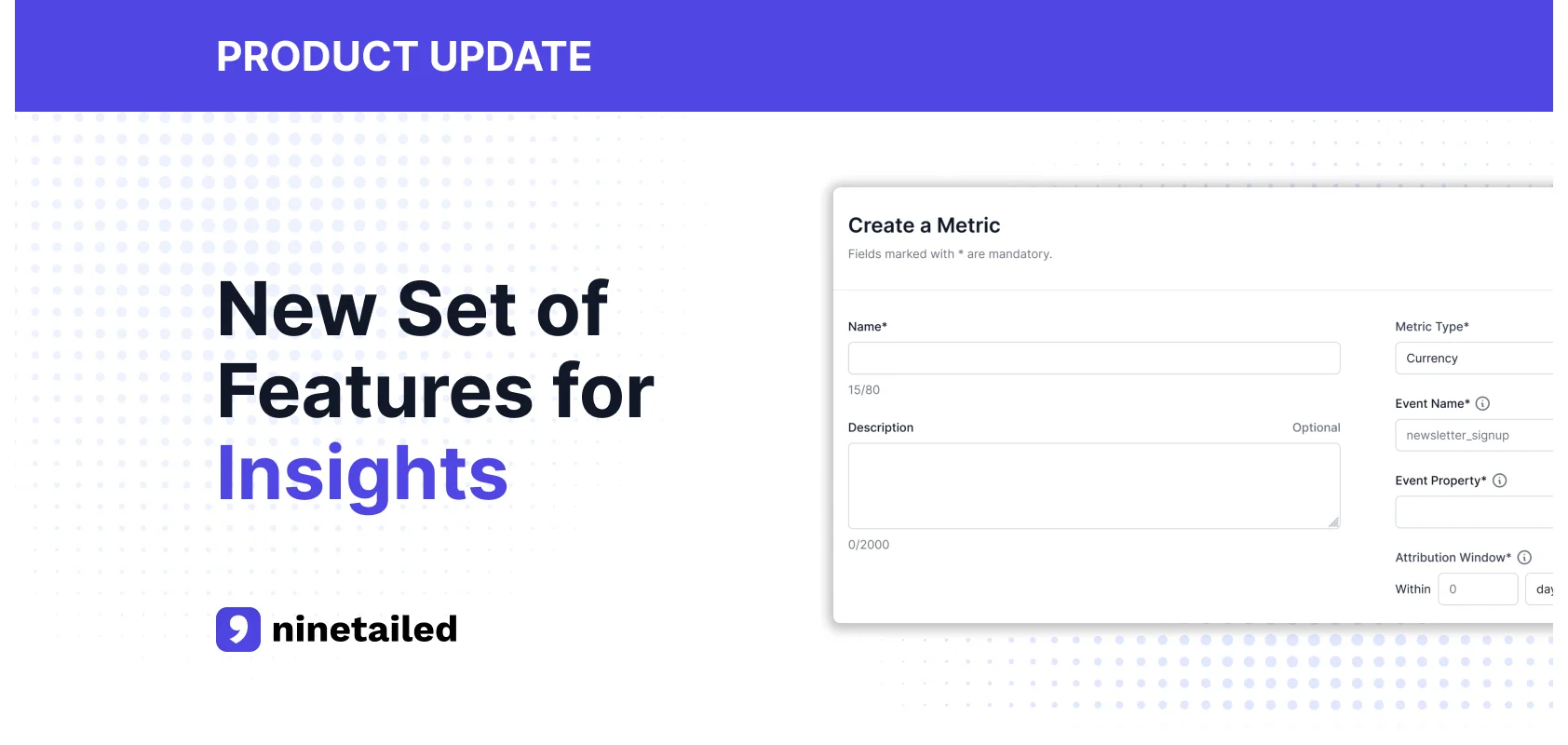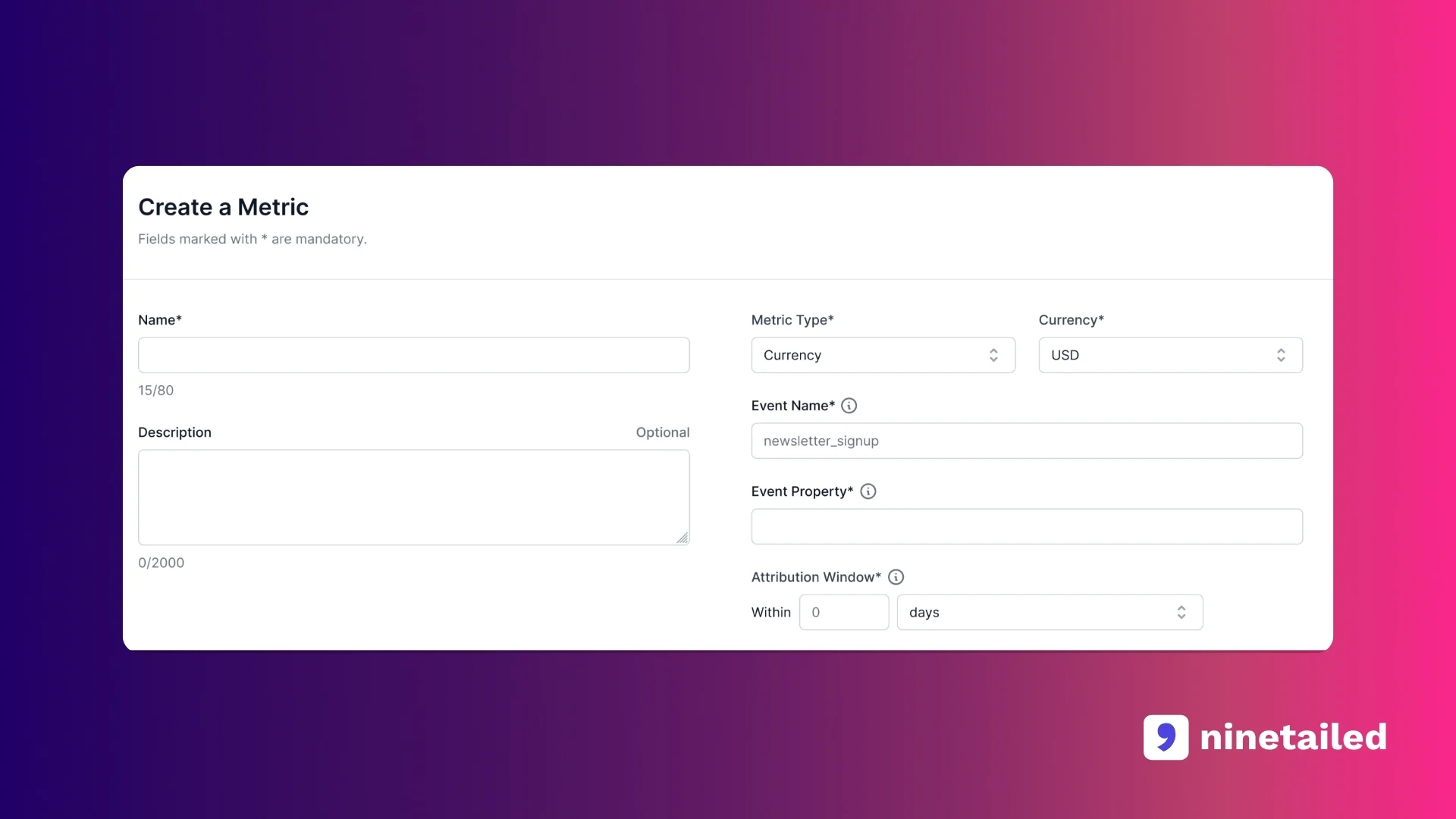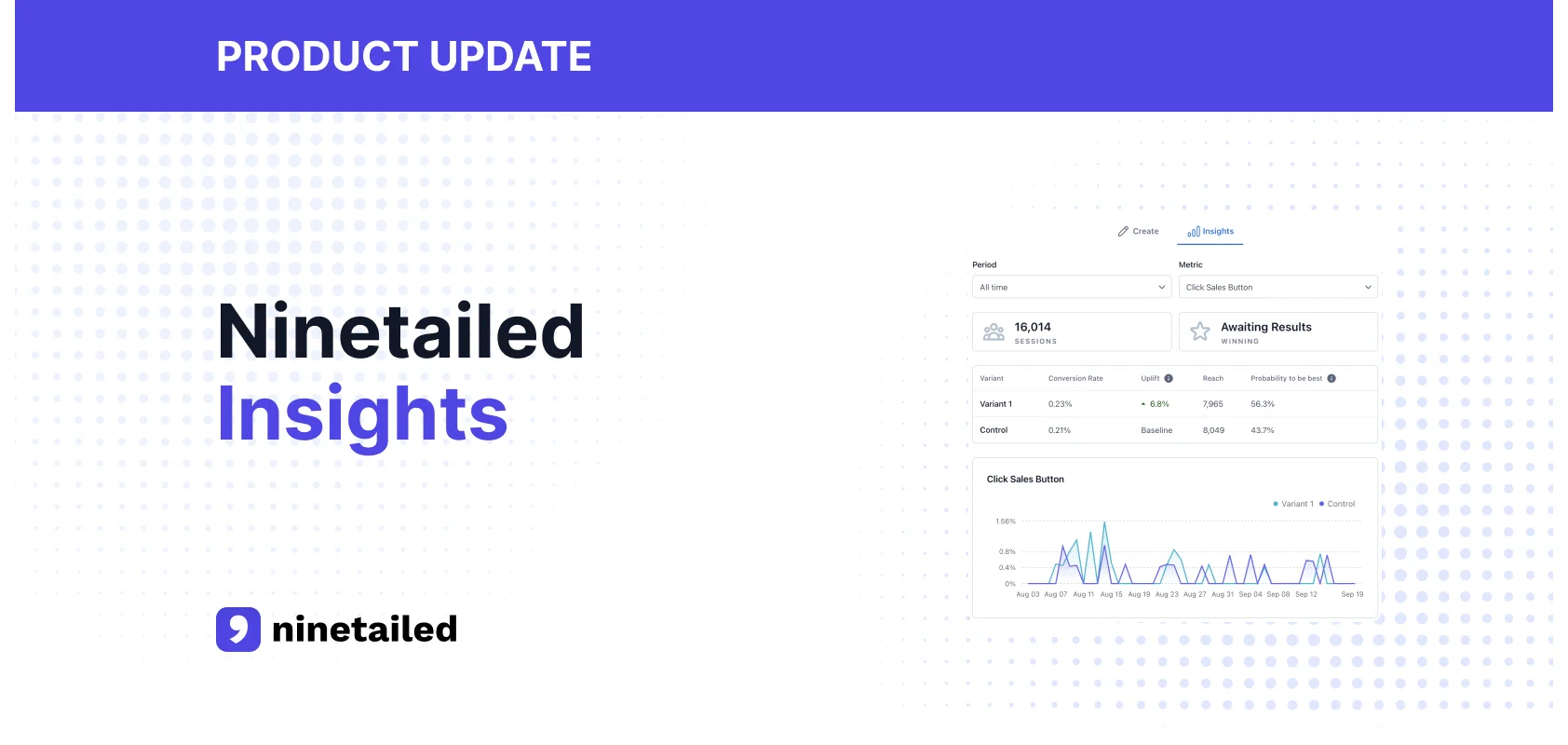- Analytics,
- Announcement
Introducing a New Set of Features to the Ninetailed Insights


We're thrilled to announce that Ninetailed Insights has just become even more powerful.
As a relentless advocate for marketing efficiency and effectiveness, we're introducing new features that will take your data-driven strategies to new heights.
Our new features are designed to offer you more control, flexibility, and real-time insights:
Near Real-Time Updates: To keep you ahead of rapidly changing trends, we've supercharged our system to provide updates every hour. Now, you can make informed decisions faster than ever based on the most recent data.
Custom Date Ranges: Say goodbye to rigid date presets. Our custom date range feature allows you to tailor your analysis period according to your unique needs, enabling more precise and relevant insights.
User-Level Attribution: Expanding our offering beyond session-level attribution to include user-level attribution to understand your audience better with our attribution models. This feature helps you track user interaction across various touchpoints, providing a holistic view of your customer's journey.
Custom Conversion Metrics Setup: No more one-size-fits-all metrics. Set up your own conversion metrics based on what matters most to your experiments and personalized experiences. This customized approach empowers you to focus on the KPIs that truly drive your growth.
With these enhancements, Ninetailed Insights continues its commitment to empower marketers to uncover valuable insights and optimize personalized experiences.
And the best part?
All these features can be seamlessly managed inside your CMS.
Let's take a closer look at some of these new features:
Customize Your Attribution Window
Ninetailed has now expanded its offering beyond session-level attribution to include user-level attribution. This new feature enables a more holistic view of a user's journey, tracking interactions across multiple sessions rather than focusing on individual ones.
While the session-level model focuses on individual user sessions, attributing all conversions to the last touchpoint within that particular session, the user-level model takes a broader view by attributing conversions to the last touchpoint across multiple sessions from the same user.
This holistic approach allows marketers to understand better the cumulative impact of their marketing efforts on individual users over time.
Now, you may be wondering which attribution model I should use.
Choosing the right attribution model depends mainly on your experiment or personalized experience goals, the nature of your marketing campaigns, and the customer journey you want to analyze.
If you aim to understand the effectiveness of a specific touchpoint within a single user session, then a session-level attribution model may be most suitable. It attributes all conversions to the last touchpoint within a particular session, allowing you to isolate and measure the impact of individual marketing efforts.
Consider this scenario: A user is prompted to register for your webinar with a banner that's limited to appearing once per week. The user initially dismisses the banner but then registers three days later in a different session. With session-level attribution, you can conclude that the initial banner didn't directly lead to the subscription, enabling a faster and more accurate understanding of what influenced the conversion.
On the other hand, if you're looking to gain a more holistic view of a user's journey across multiple sessions, the user-level attribution model would be a better choice. This model assigns credit to the last touchpoint across all sessions from a specific user. It offers a more comprehensive understanding of the cumulative effect of your marketing strategies over time.
Now, imagine a customer purchasing a high-ticket item like a personal computer, a process often spanning multiple sessions involving product research, comparison, and physical store visits before finally making the purchase online. Relying solely on session-level attribution might undervalue the role of personalized experiences spread across these sessions. In such instances, user-level attribution provides a more comprehensive view.
Therefore, marketers choose their attribution model—session or user—based on their specific needs, allowing for a more precise evaluation of their marketing strategies.
Choose the Date Range You Want to Analyze

Choosing a custom date range in the analysis of A/B tests and personalized experiences is crucial for several reasons:
Relevance: By selecting a specific time frame, you focus on the period most relevant to your test or campaign. This helps in eliminating data from before the test started or after it ended, ensuring that only the pertinent data is considered.
Accurate Comparisons: If you're running multiple tests or campaigns at different times, a custom date range allows you to compare them over the same duration. This facilitates more accurate comparisons and evaluations.
Performance Tracking: Custom date ranges enable you to monitor the performance of your tests or campaigns over time. You can track changes in key metrics week-over-week, month-over-month, or year-over-year, helping identify trends and patterns.
Avoiding Noise: Some external factors, such as a viral news story or a major event, can temporarily influence user behavior. By using a custom date range, you can exclude these outlier periods to avoid skewed results.
In summary, selecting a custom date range enhances the accuracy and relevance of your data analysis, leading to more informed decisions and effective marketing strategies.
Setup Your Own Conversion Metrics

These customized metrics allow you to tailor your conversion metrics according to your unique business needs rather than relying on generic, one-size-fits-all metrics. This feature recognizes that every experiment or personalized experience is different, with distinct goals, strategies, and key performance indicators.
Here's a deeper look at its benefits:
You can define what a 'conversion' means for your business. Whether it's an email signup, a product purchase, or a completed survey, you get to decide what actions matter most
By setting up custom conversion metrics, you can concentrate on the KPIs that truly reflect your experience objectives and drive growth. This could be anything from customer retention rate to average order value or repeat purchases
With metrics that are directly tied to your experience goals, you can make more informed decisions. They allow for more accurate tracking and analysis of your marketing efforts, helping identify what's working and what's not
In summary, this feature gives you the power to measure success on your own terms, focusing on the metrics that are most meaningful to your experiments and personalized experiences. It's a valuable tool for any business seeking to optimize their strategies and drive growth.
→ To learn more about what type of conversion metrics you can set up with Ninetailed Insights, check out the documentation page.
Simplify Personalization and Experimentation with Ninetailed's New Features
At Ninetailed, we believe in the power of simplicity and efficiency to drive business success. We've designed Ninetailed with these principles in mind, eliminating unnecessary workflows and maximizing your capabilities.
We aim to make crafting and understanding tailored experiences and experiments effortless and streamlined for you.
Our dedication to simplifying workflows translates into significant time and resource savings for you.
By reducing the need for additional steps in the creation and analysis processes, you can focus more on other key business aspects, thereby driving more revenue and higher ROI from your content and data investments and enhancing customer experiences more efficiently with experiments and personalized experiences.
Get in touch to learn how Ninetailed personalization, experimentation, and insights works inside your CMS

